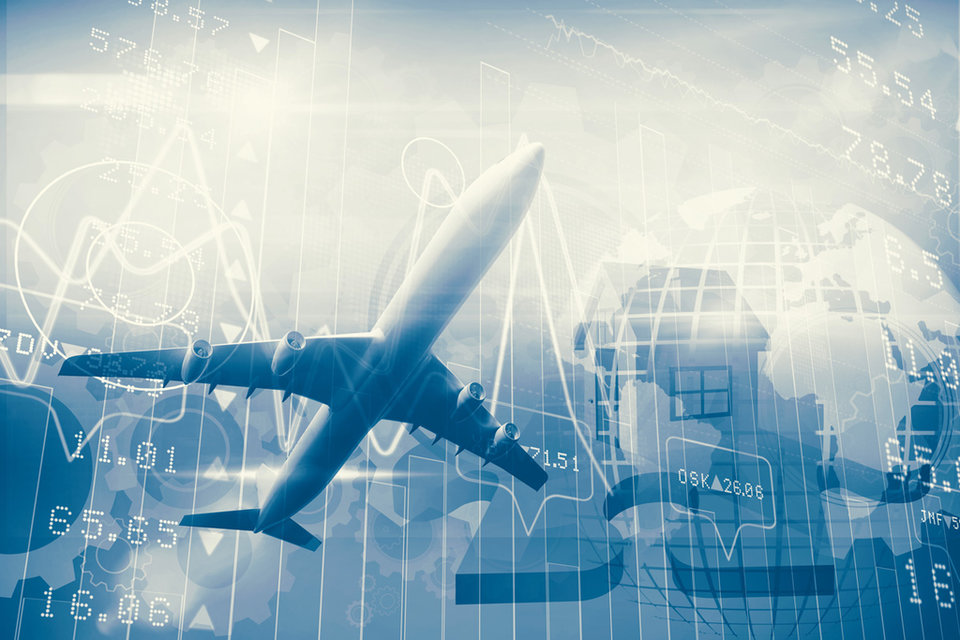Technology
FLY AI: the role of artificial intelligence in aviation
The European Aviation High Level Group on AI has published a report assessing the benefits of using AI in aviation and air traffic management. Lead authors EUROCONTROL and SESAR JU discuss the report’s takeaways and where automation can help the sector take off in the coming years with Adele Berti.
British mathematician and scientist Alan Turing first looked into computing intelligence in 1950. In a paper called “Computing Machinery and Intelligence”, he suggested using a now-famous ‘Imitation Game’ to test a machine’s sentient capabilities, which eventually laid the groundwork for the development and discovery of artificial intelligence (AI).
Decades later, AI and its subsets - machine learning and deep learning - are set to influence the future of many sectors, including aviation. Over the last few years, AI has found a wide array of applications in the industry - from ground handling services to airport security and air traffic management (ATM) - and there is now scope for more.
This is the argument of the recently-published FLY AI report, which sets out key steps towards a stronger adoption of AI, machine learning and other digital tools in several areas of aviation. Released by the newly formed European Aviation High Level Group on AI, the paper draws upon expertise from key players in the sector. These include leader EUROCONTROL, the Single European Sky ATM Research (SESAR) Joint Undertaking, the International Air Transport Association, Airbus and Airport Council International’s European division.
Alongside debunking some myths around AI, the paper identifies the most promising areas for its uptake. It also features a ‘FLY AI Action Plan’ that outlines future measures to better integrate the technology in ATM and other segments of aviation.
Image:
The importance of demystifying AI
“AI has been around for more than 60 years but has gained ground more recently, thanks to advances in computing and access to data,” comments SESAR JU executive director Florian Guillermet. “Machine learning and deep learning are helping to create applications that can learn autonomously and advise on complex problems. Aviation is no stranger to the virtues of AI.”
In recent times the technology has gained traction in segments such as intelligent maintenance, engineering and prognostics tools, supply chains and customer services. The sector is now eager to find more applications for AI, with some European countries - particularly Ireland, Finland, Cyprus, Luxembourg, Sweden and the Netherlands - leading the way.
“The aviation industry has started to exploit the potential of machine learning algorithms on non-safety critical applications,” adds EUROCONTROL head of infrastructure division Paul Bosman. “Recently, significant effort has been put on adapting the current certification framework to the specific characteristics of AI applications. With AI, the industry’s focus on cybersecurity has also increased.”

Image:
Based on this assumption, the report aims to “demystify and accelerate the use of AI in aviation and ATM in particular”, says Guillermet. This field directly involves SESAR, which has been coordinating all EU research and development activities in ATM since 2007 and actively contributed to the production of the report. “We also looked at the future evolution in the use of AI,” he continues, “in particular with the development of joint human-machine cognitive systems."
On the other hand, EUROCONTROL has acted as leader of the project under the European Aviation High Level Group on AI. The group was formed during EUROCONTROL’s inaugural conference on AI that took place in May last year.
Eero Knuutila is Head of Service Development at Helsinki Airport.
Image courtesy: Helsinki Airport
The aviation industry has started to exploit the potential of machine learning algorithms on non-safety critical applications
Where AI can actually ‘fly’
Guillermet explains that Europe has “a strong basis of expertise and knowledge to further develop AI for ATM”. Here, automation can help improve operational efficiency in different segments of aviation.
“For instance,” he says, “machine learning digital assistants can mine huge amounts of historical data to support human operators on the ground or in the cockpit to make the best possible decisions.”
Within this framework, the FLY AI report identified four areas where AI can help tackle current and future challenges. These are airspace capacity, which is rapidly running out in Europe, the climate change crisis, digital transformation and new levels of complexity in the integration of unmanned aircraft in an already overcrowded airspace.

“AI’s ability to identify patterns in complex real-world data that human and conventional computer-assisted analyses struggle to identify makes it extremely well-suited to the aviation sector,” says Bosman. “AI has the potential to transform aspects of the aviation sector, enabling ATM functions to be performed in entirely different ways in the future.”
Bosman also believes that automation can play a pivotal role in improving the industry’s environmental credentials. “By accelerating the digital transformation in terms of optimising trajectories, creating ‘green’ routes and increasing prediction accuracy,” he says, “AI could make a real difference to mitigating the environmental impacts of aviation, in addition to providing decision-makers and experts with new features that could transform the ATM paradigm in terms of new techniques and operating procedures.”
In addition, better use of data will help increase and improve predictions with more sophisticated tools, while also boosting the scalability, efficiency and resilience of the current ATM system. Lastly, the technology can enhance safety in segments such as cybersecurity, conflict detection, traffic advisory and resolution tools.
Machine learning digital assistants can mine huge amounts of historical data to support human operators on the ground or in the cockpit
The FLY AI Action Plan and future steps
A key takeaway from the report is that stronger cooperation is needed to integrate AI in the existing aviation architecture. “The aim is to create an ecosystem involving industry, research institutes, start-ups, policymakers and all relevant stakeholders, in which all conditions are met to progress collectively on this,” says Guillermet. “No one entity can address it alone.”
In response to this need, the report’s FLY AI Action Plan looks at the whole value chain from research to implementation and provides stakeholders with a call for action.
According to Bosman, the plan identifies six accelerators that will help achieve this purpose. “It is now critical that the community gets together,” he adds. “A way forward would be to set up a community of practice.”

The first step will be developing a “federated data foundation and AI-infrastructure” that will grant access to data and enable the creation of an AI aviation partnership. In addition, the European Aviation High Level Group on AI suggests launching specific aviation/ATM training, reskilling/upskilling programmes, change management, a knowledge-based toolbox, and European AI aviation/ATM master classes to share best practices. Awareness and demystification campaigns should also be included.
Meanwhile, the industry will also have to build an AI aviation/ATM community to attract future experts to the sector. This, Bosman says, will help consolidate community expertise.
The aim is to create an ecosystem involving industry, research institutes, start-ups, policymakers and all relevant stakeholders
Covid-19: can the ongoing crisis catalyse more automation in the future?
Both EUROCONTROL and SESAR believe that the ongoing coronavirus crisis could help foster automation in the industry despite the challenges that it is causing. “The crisis has shown the limits and significant efforts required when using the current manual approach or analytical tools to try to understand the impact of the crisis, predict and help business recovery,” says Bosman.
Specifically, AI’s reliance on historical data sets on which to train neural networks means that in the event of a second wave of the pandemic, using these data sets will help improve crisis response. “As a precaution in the face of such a risk, it makes sense to gather and store all possible data related to the virus and its impact. This is so that they can be used to develop new AI applications that could support the aviation industry in dealing with any future waves of Covid-19 or other pandemics.”

In addition, Guillermet says that the pandemic is shining light on the importance of new technologies to help businesses through a crisis. “Mastering these technologies and accelerating our plans for a digital Europe sky will deliver an aviation operating environment, which is more resilient, scalable and economically and environmentally sustainable in the long run,” he comments.
“Because aviation is one of the industrial sectors most impacted by the coronavirus pandemic, it should further accelerate the adoption of AI,” Bosman concludes. “AI can really help transform the industry, provide better decision-making tools, and improve industrial and operational efficiency.”
The crisis has shown the limits and significant efforts required when using the current manual approach